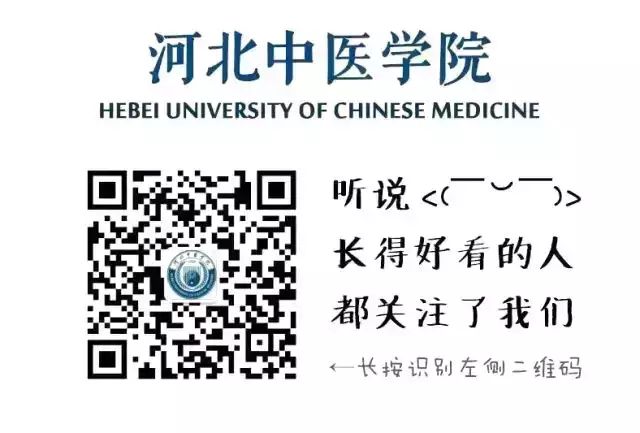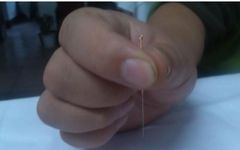
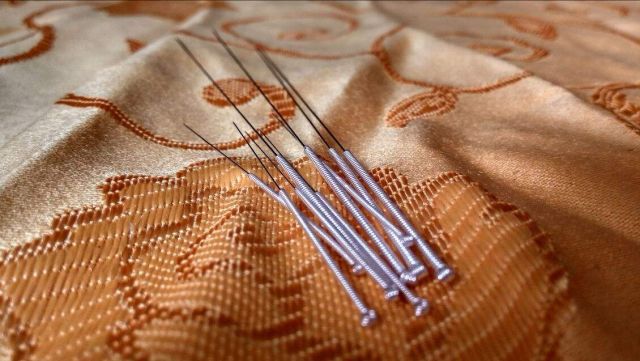
The earliest records of the fine needle (hao zhen) can be found in the Huangdi Neijing (Yellow Emperor’s Inner Canon). Due to its relatively easy operation and low risk, it has continuously surpassed the other eight needles in its development over the years, becoming the primary acupuncture tool in clinical practice today.
Today, let us delve into the fine needle and understand its usage.
Structure of the Fine Needle




The fine needle consists of five parts: needle tip, needle body, needle root, needle handle, and needle tail.
1. Needle Tip: The sharp end of the needle body, also known as needle point (zhen mang).
2. Needle Body: The main part from the needle tip to the needle handle, also referred to as the needle shaft.
3. Needle Root: The part that separates the needle body from the needle handle.
4. Needle Handle: The section from the needle root to the needle tail, which is also the part held by the practitioner during operation.
5. Needle Tail: The end part of the needle handle.
(Note: In modern acupuncture practice, to avoid cross-infection, disposable fine needles are generally used, most of which do not have a needle tail.)
Basic Operations
1
Needle Holding Posture
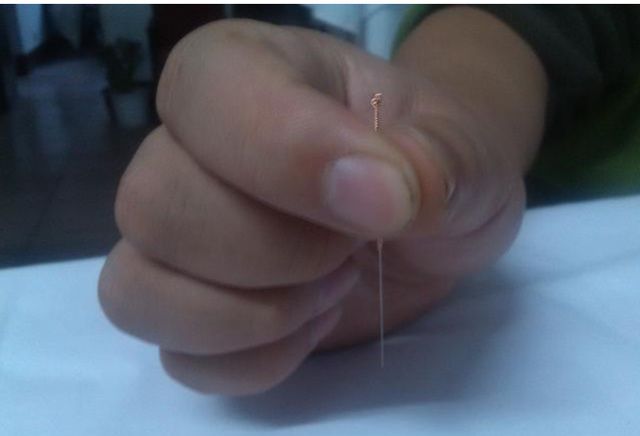


The posture for holding the needle resembles holding a brush, hence it is called the brush-holding method. Depending on the number of fingers used, it is generally divided into two-finger, three-finger, four-finger, and five-finger holding methods.
1. Two-Finger Holding Method: Using the thumb and index finger of the right hand to pinch the needle handle, with the needle body forming a 90° angle with the thumb. This method is generally used for short fine needles in shallow acupuncture points.
2. Multi-Finger Holding Method: Using the thumb, index, middle, and ring fingers of the right hand to hold the needle handle, with the little finger resting on the skin beside the needle, supporting the needle body vertically. This method is generally used for deep acupuncture with long needles.
2
Needle Insertion
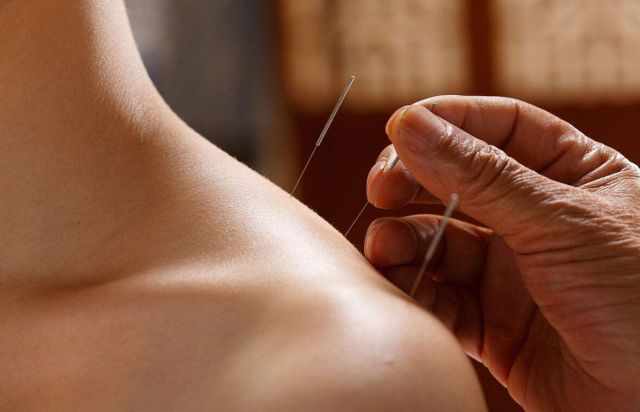
1. Single-Hand Insertion Method
Using the thumb and index finger of the right hand to hold the needle, with the middle finger resting close to the acupuncture point, the fingertip pressing against the middle of the needle body. When the thumb and index finger apply downward force, the middle finger also bends, inserting the needle into the acupuncture point.

2. Double-Hand Insertion Method
(1) Finger Cutting Insertion Method: Using the nail of the thumb or index finger to press the skin at the acupuncture point, holding the needle with the other hand, with the needle tip close to the edge of the pressing finger, quickly inserting the needle. This method is suitable for inserting short needles and can also be used for acupuncture points located near important tissues or organs. (The hand holding the needle is generally the right hand; the hand pressing the acupuncture point is generally the left hand.)
(2) Clamping Insertion Method: The pressing hand uses the thumb and index fingers to hold a disinfected cotton ball wrapped around the lower end of the needle, exposing the needle tip to contact the acupuncture point. The needle holder and the pressing hand apply force simultaneously to insert the needle into the acupuncture point. This method is suitable for long needles.
(3) Pinching Insertion Method: Using the left hand’s thumb and index fingers to lift the skin at the acupuncture point, the right hand holds the needle and inserts it from the upper end of the pinched area, mainly used for shallow acupuncture points like Yintang (Hall of Impression).
3
Needle Manipulation

1. Lifting and Thrusting Method
The lifting and thrusting method involves inserting the needle to a certain depth and then performing upward lifting and downward thrusting movements. The action of inserting the needle from a shallow layer to a deeper layer is called “thrusting,” while the action of withdrawing the needle from a deeper layer to a shallow layer is called “lifting.”
2. Twisting Method
The twisting method refers to inserting the needle to a certain depth and then performing forward and backward twisting movements, causing the needle to rotate back and forth within the acupuncture point.
Enhancing Finger Strength
1
Arm and Hand Movement Practice

Preparation Position:Stand upright with feet shoulder-width apart, legs firm and steady.
First Position: Arms parallel to the shoulders, extending forward, with hands bent at the chest, palms facing down, fingers touching, then drawing circles inward and outward 32 times.
Second Position: Arms extended to the sides, palms facing down, drawing circles inward and outward 32 times.
Third Position: Arms extended forward, wrists and fingers moving, drawing circles from left to right 16 times while focusing on the fingertips, then repeating the same action from right to left 16 times.
2
Paper Pad Practice Method

1. Use soft paper, folded to a length of about 8cm, width of about 5cm, and thickness of 2-3cm, secured with thread in a “井” shape to create a paper pad.
2. During practice, the pressing hand holds the paper pad, while the needle hand uses the index finger or thumb, index, and middle fingers to hold the needle handle, ensuring the needle body is vertical to the paper pad. Then, move the needle handle steadily and gradually increase the force to insert the needle into the paper pad. After the needle penetrates the pad, twist and withdraw the needle, then change to another spot and repeat the practice.
3. In the initial practice phase, it is advisable to use 1.5-inch, size 24-30 fine needles. Once a certain level of finger strength is achieved, other sizes of fine needles can be used.
Learning acupuncture is not a one-day task; it requires diligent practice to develop finger strength. When first needling a person, it is recommended to start with acupuncture points on the limbs that have more muscle, such as Stomach 36 (Zu San Li), Large Intestine 11 (Qu Chi), and Pericardium 6 (Nei Guan), accumulating experience before attempting other areas.
Talk is cheap; while young, roll up your sleeves and practice hard!
Editor: Wang Zhao Zheng
Editor-in-Chief: Wang Zong Xue
Graphic Designer: Guo Hao Yu
